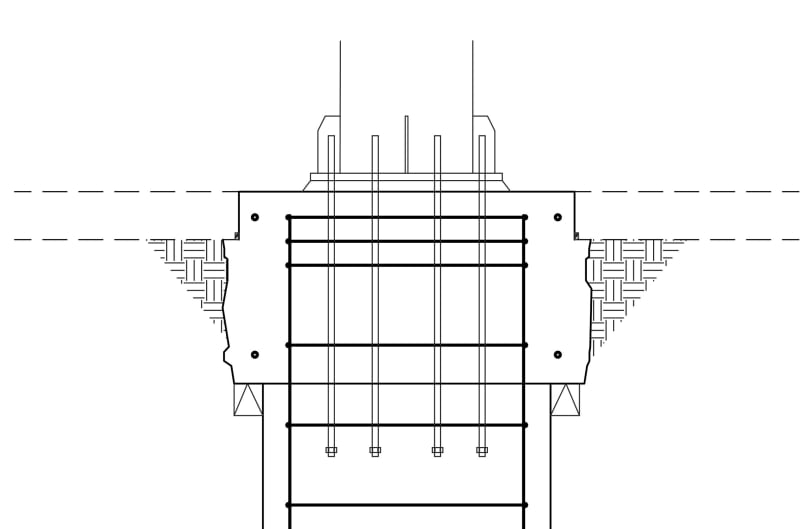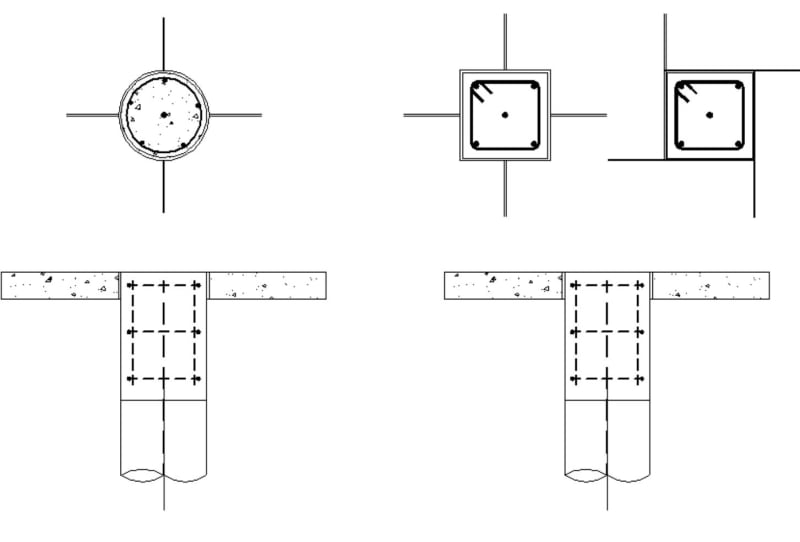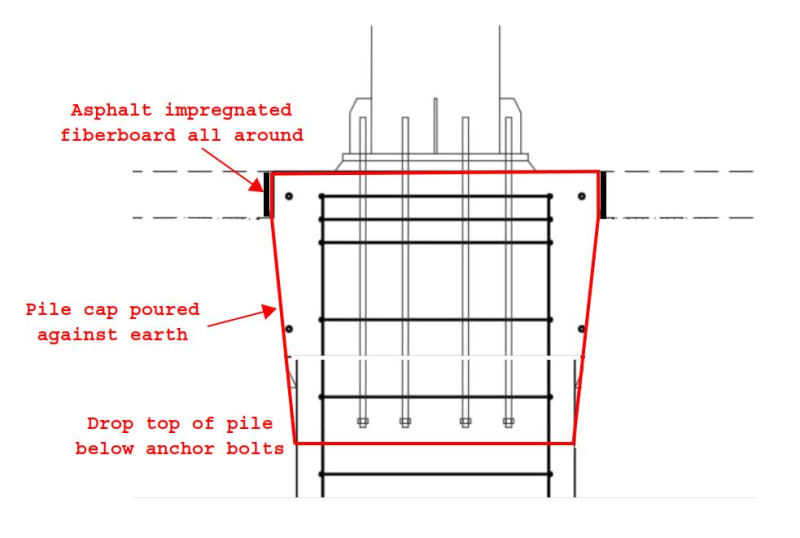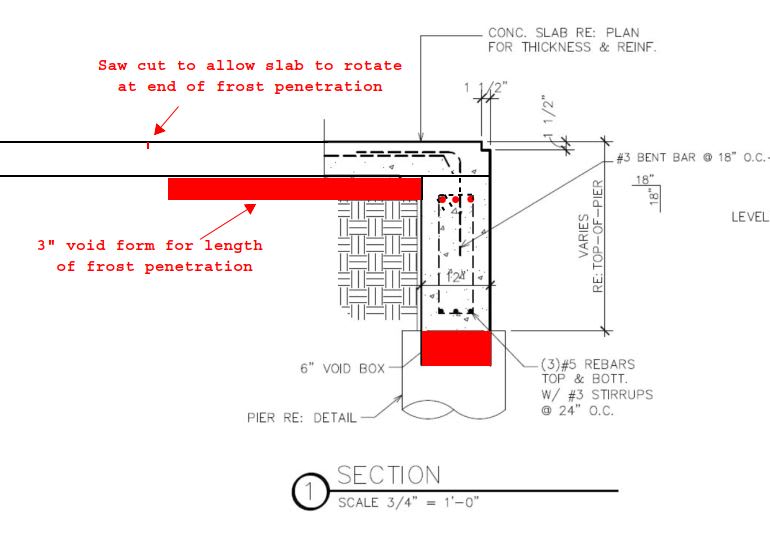DoubleStud
Structural
I am trying to understand this detail that was done by another engineer. The building has been built. Now we are trying to add foundation to support overhead crane. So the grade beam spans from drilled pier to drilled pier. They put void box below the grade beam to eliminate uplift from the expansive soil below it. My question is, what will that do if the slab next to it is tied/poured over the beam? Wouldn't the slab going to push up? I have never done one of these before but if I were to detail it, I would just pour the slab over (or ledge) the grade beam. This way the grade beam will prevent the slab at the perimeter from settling, but will not prevent it from an uplift.
I am trying to figure out how I should do the drilled pier cap for my overhead crane. How do I transition from existing slab to the pile cap? Do I want the transition to be free to slide? Add expansion joint? But on the other hand I dont want water to seep through the joint and make the soil swell. Thoughts?
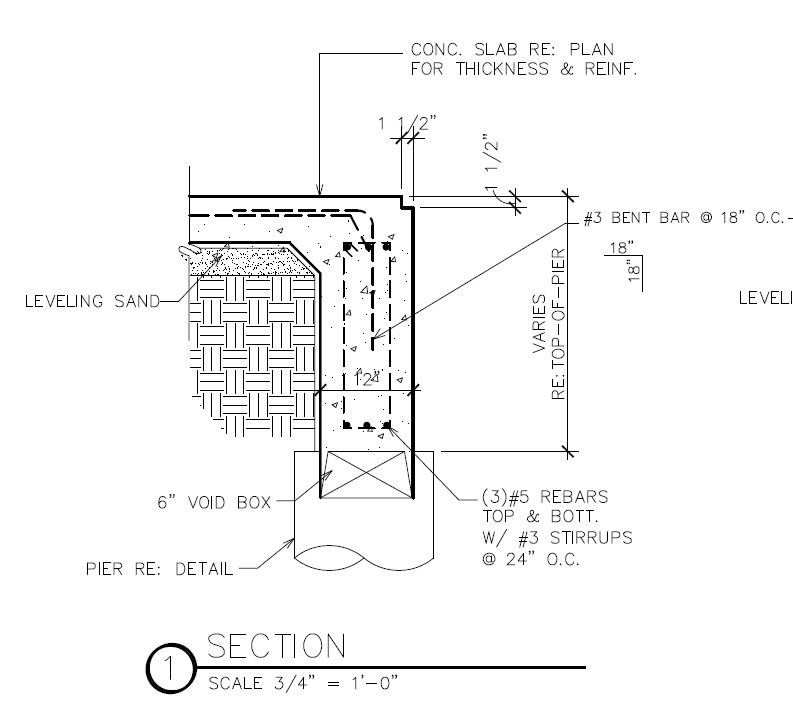
I am trying to figure out how I should do the drilled pier cap for my overhead crane. How do I transition from existing slab to the pile cap? Do I want the transition to be free to slide? Add expansion joint? But on the other hand I dont want water to seep through the joint and make the soil swell. Thoughts?


![[pipe] [pipe] [pipe]](/data/assets/smilies/pipe.gif)
![[ponder] [ponder] [ponder]](/data/assets/smilies/ponder.gif)
